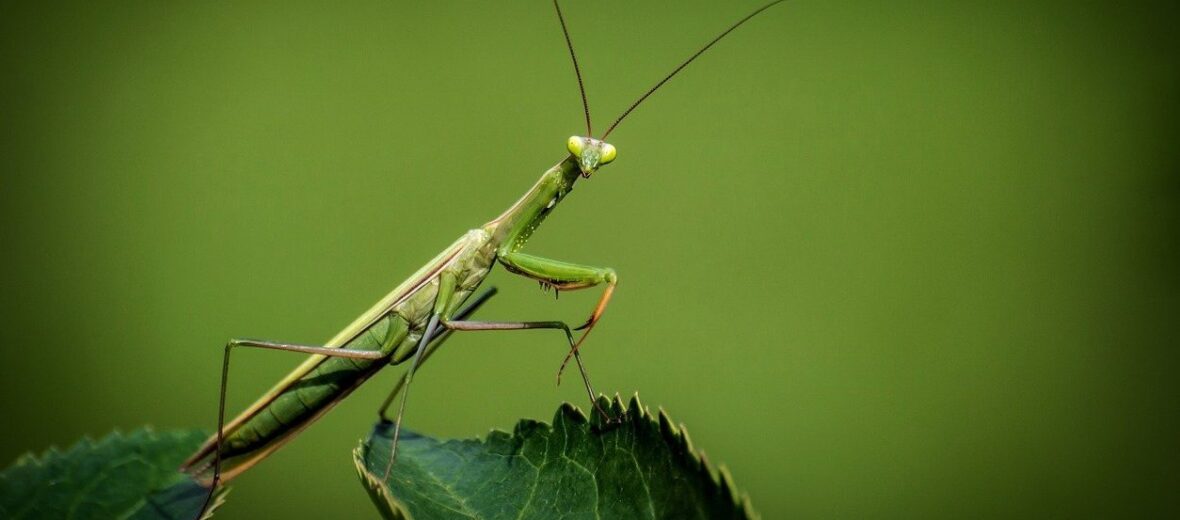
So named for their dominant front legs which fold in such a way to suggest prayer, it’s the praying mantis. These ferocious predators are as beneficial as they are just downright cool. These ambush predators not only have a taste for flesh, but about 30% of the females will even cannibalize their would-be suitor, if she is so inclined. They also have an amazing ability to camouflage themselves to even resemble ornate flowers. There are approximately 2,000 known species of mantids in the world and only 18 species live in North America. Most live in the tropical regions of the world. This article is on special request from my friend Nick.
First the Stats…
Scientific name: Mantodea
Weight: Up to .17 ounce
Length: Up to 5 inches
Lifespan: Up to 1 year
Now on to the Facts!
1.) Mantids have the ability to turn their heads a full 180°!
2.) Praying mantises, cockroaches, and termites are believed to have descended from a common ancient ancestor.
3.) These insects can actually see in 3-D and each of their eyes have a fovea (a concentrated area that allows them to focus and track with high visual acuity). They also have 3 additional simple eyes located in between their dominant eyes.
4.) They have the ability to jump with extreme accuracy, even contorting their body midair to land on a specific target.
5.) Mantises only have 1 ear and it’s located on the underside of their body, between their legs.
But wait, there’s more on the praying mantis!
6.) Their camouflage abilities are legendary. They can disguise themselves as flowers, leaves, sticks, and branches. Some mantises will even molt at the end of the dry season to gain a black exoskeleton, this way they blend in with the vegetation that brush fires leave behind.
7.) Mantises only eat live prey. The more it moves the tastier it must be.
Did you know…?
They not only eat insects, but it is not uncommon for them to take down amphibians, lizards, snakes, and even birds. A favorite is the hummingbird.
8.) The female will sometimes literally bite the head off the male, which removes the inhibition of approaching her to copulate. She then mates with the headless male and then often eats the rest when finished. Observations have been made where a female has been eating a bird while copulating. Now that’s talent.
9.) Spiders, insectivorous birds, bats, amphibians, and reptiles prey on mantids.
10.) Even though they are primarily beneficial, they are not discriminatory predators and have no problems with eating a bee just as they would a pesky caterpillar. So, technically they can be both beneficial and a pest.
But wait, there’s still more on the praying mantis!
11.) They have been around for a while; since the Cretaceous Period – 166 million years ago.
12.) When encountering a bat, they are able to detect the bat’s echolocation vocalizations and will dive to the ground in a spiral pattern to avoid the bat’s sharp toothed attack.
13.) Females will create what is called an ootheca. This is an egg case that feels like Styrofoam. The eggs inside develop over winter and hatch in spring. Some oothecas can contain as many as 400 eggs!
14.) The nymphs that hatch look identical to the adults, just really tiny.
Now a Short Praying Mantis Video!
Also, check out the Critter Science YouTube channel. Videos added frequently!
Want to suggest a critter for me to write about? Let me know here.



